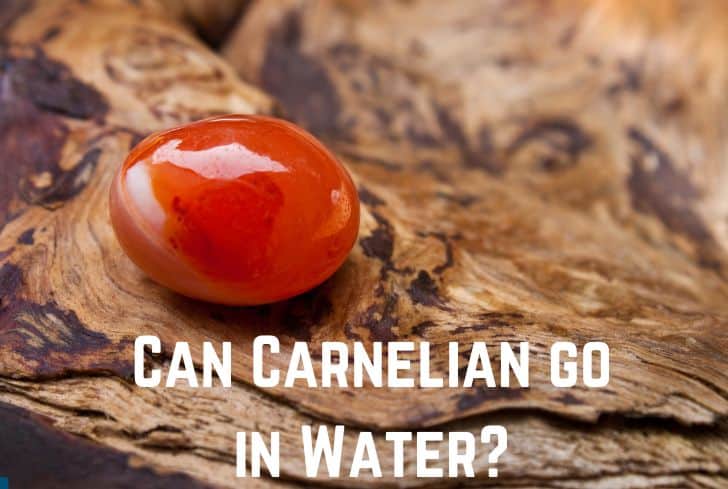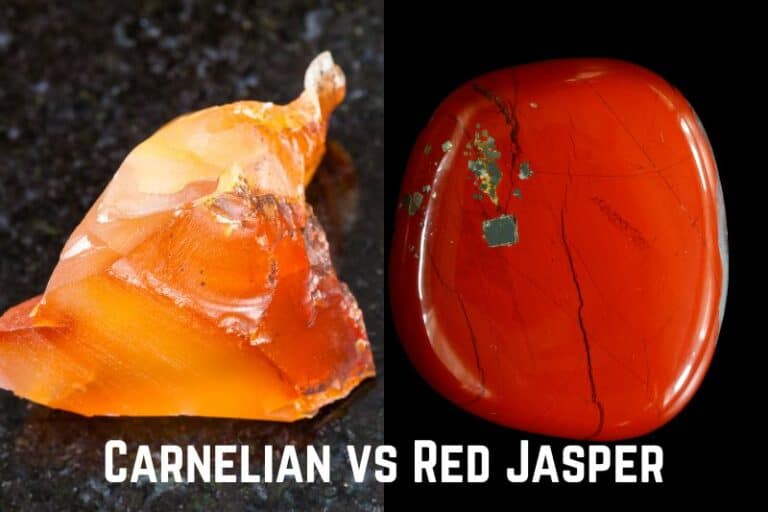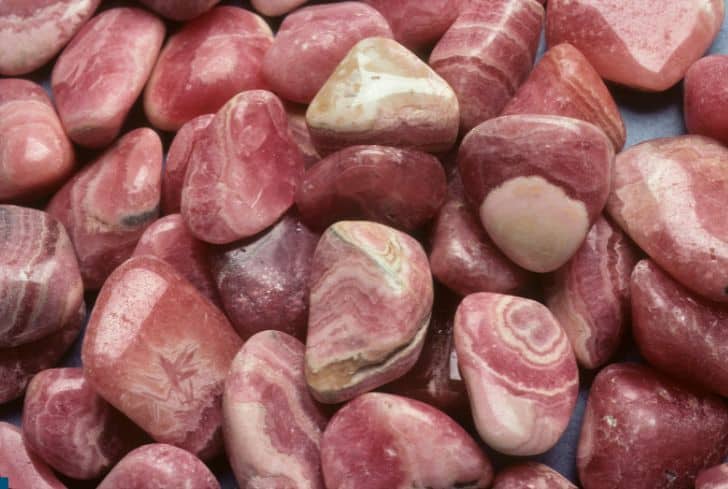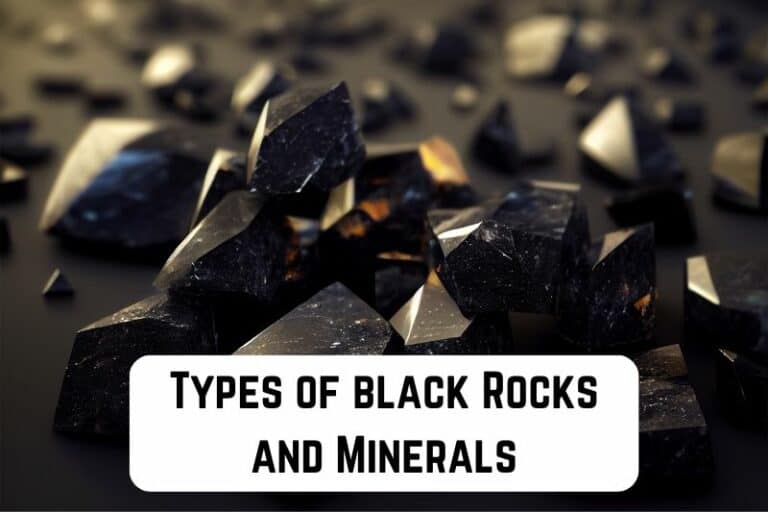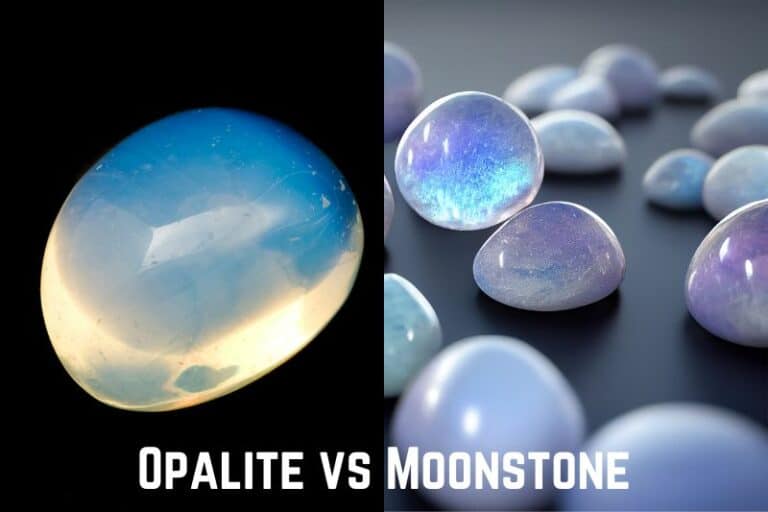Can Howlite Go in the Water? (And in Sun and Salt)
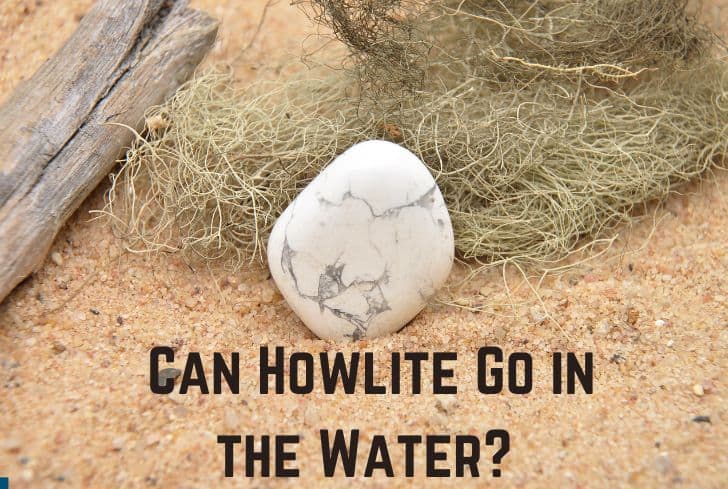
Howlite is a borate mineral with a chemical formula of Ca2B5SiO9(OH)5. It is an evaporite deposit, meaning that it is a mineral formed after evaporation from an aqueous solution. Howlite usually occurs in the form of irregular nodules, and it is found in places like California (the US) and Nova Scotia (Canada).
Have you ever wondered if Howlite can go in the water? In this article, we are going to discuss just that. We will begin with the properties of Howlite. Then we will talk about the interaction of its variants with water and salt. We will also see how they react to sunlight and moon water.
Is Howlite Water Safe?
Yes, Howlite can be kept in water for a short period but should not be immersed for long. It has a value of 3.5 on the Mohs Scale, which is below the minimum value required for minerals to be safe underwater. Prolonged exposition to water is dangerous because it dulls the surface, damages the structure, and can even dissolve the stone.
Mohs Hardness Scale is a relative measure of a mineral’s resistance to scratching. Besides that, it also indicates a mineral’s relationship to water. Usually, a value over 5.0 on the scale means that the mineral is safe to go underwater.
However, there are some exceptions to this rule. Most borate minerals like borax and ulexite are soft and soluble in water. However, howlite is composed of calcium borosilicate hydroxide. So like boracite, it is also resistant to water and can survive immersion.
But, as with all minerals, it should only be immersed for a short time. Leaving stones in water for a long time is always dangerous as it can damage the appearance and structure of the stone.
What are the Properties of Howlite?
These are the properties of Howlite
- Appearance: Howlite is generally white. It has grey or black veins that run in a web-like pattern. The California variant is opaque and has a sub-vitreous lustre. The Nova Scotia variant can come in colorless, white, or brown colors, and it can be transparent or translucent.
- Structure: Howlite has a monoclinic crystal system and it lacks regular cleavage. These crystals range from massive to nodular, and they occur as flattened tabular prisms. Howlite has an even and smooth fracture.
- Formation: Howlite is found in continental evaporite deposits with other borate minerals. It occurs as irregular nodules resembling cauliflower; crystals on the nodules are rare. Its chemical formula is Ca2B5SiO9(OH)5.
- Hardness: Howlite has a value of 3.5 on the Mohs Hardness Scale. This means that it is relatively soft and can get scratched by other harder stones. It also indicates that it is not very safe underwater for long, although it can be immersed for a short time.
- Treatments: Howlite has a porous texture, so it can be easily dyed to imitate other minerals. It is especially used to stimulate turquoise, because of the similar veining pattern. Turquoise has a hardness of 1.0 and requires stabilization to be used in jewelry. This is where Howlite, being relatively harder, comes as a better alternative.
Besides these properties, Howlite is also said to possess spiritual properties. It is considered a calming stone, which tempers the storm within you. It is also said to teach patience while eliminating rage and stress.
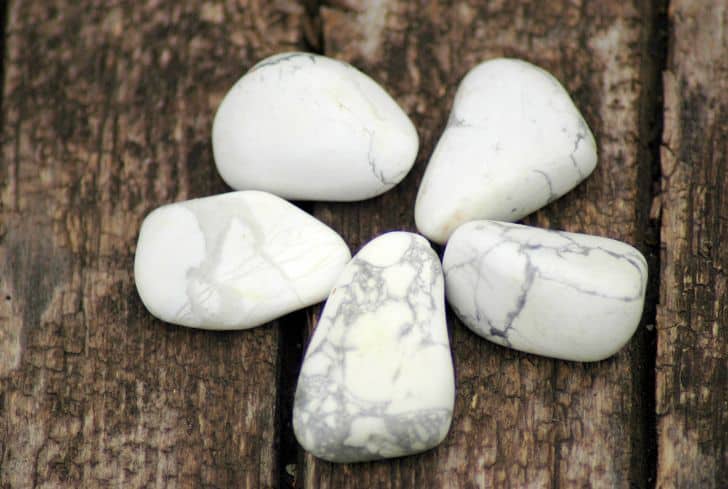
Can Howlite go in Salt Water?
No, Howlite should not be put into salt water. Howlite has a value of 3.5 on the Mohs Hardness Scale, which is less than the minimum value required for minerals to be underwater. So Howlite is rather unsafe in water for long periods. Saltwater only makes this corrosive effect worse.
Water in itself is harmful to howlite when the stone is immersed for a long time. Water tends to dull the surface, damage the structure, and can even completely dissolve soft minerals.
Saltwater makes this corrosion worse. When dissolved in water, it can penetrate the crevices of the stones. Here, these particles can remain even after the water evaporates, and they can widen the cracks. This damages the structure of the stone.
Moreover, many stones can have an adverse chemical reaction when they come into contact with salt. This is especially true for minerals containing iron because salt water hastens the process of rusting by allowing the metal to lose its electrons more easily.
Can White Howlite go in the Water?
White Howlite can go in the water but it should be immersed for extended periods. Like all variants of Howlite, it has a value of 3.5 on the Mohs Hardness Scale, meaning that it cannot go into the water for long. Prolonged exposure to water can dull the surface and damage the stone.
White Howlite is white/grey with black or brown veins. It is considered a stone of infinite patience; its soft peaceful energy can help settle an overstressed mind. It is related to the throat chakra. White Howlite is found in Canada, the United States, and Turkey.
Water enters the crevices of stones and widens their cracks. These fissures may not be visible at first but can also damage the structure of the stone. The stone will then become more prone to breaking upon impact.
Water also tarnishes the appearance of the stone. It strips off the polish, making the stone a lot duller. Fissures, encouraged by water, can also change the optical effect created by the stone. So, the reflective qualities and the overall appearance of the stone get tarnished.
Can Blue Howlite go in the Water?
Blue howlite can go in the water but it should not be immersed for long. Howlite has a value of 3.5 on the Mohs Hardness Scale, which is below the minimum value required for minerals to survive underwater. Although howlite is a bit of an exception, it should still not be immersed for long.
This variant of Howlite comes in blue/bluish-green color. It is a dyed version of white Howlite, and it is found in Canada, Germany, and the USA. Blue Howlite is said to help reduce anxiety, stress, and anger—it is a calming stone.
Howlite and boracite are two exceptional borate minerals that can survive in water. However, like all stones, they should not be immersed for long. Over time, water tarnishes the surface of the stone by stripping off its polish; damages the structure by encouraging fissures; and can even dissolve soft stones completely.
Can Howlite go in the Sun?
Yes, Howlite can go in the sun. Keeping stones out in the sunlight is a common way of recharging them. However, one should always keep the chemical properties of stones in mind before doing this. In the case of Howlite, sunlight will not harm its appearance or structure, so it is safe to be recharged by the sun.
Some stones are not safe to put out in the sun. Stones like opal will lose their color in the sun. Softer ones like clear quartz can get brittle or even crack. Howlite, however, will be safe if treated properly.
You can recharge your Howlite by keeping it out in the sun for a few hours. Try leaving it out during the morning hours when the sunlight is gentle. You can also put the stone behind a window, and the glass will serve as a protective layer against UV rays.
Can Howlite go in Salt?
Putting howlite into salt is not recommended. Although keeping stones in salt is a common recharging method, it is not advisable for all crystals. Howlite has a value of 3.5 on the Mohs Hardness Scale, meaning that it is a relatively soft mineral. As such, it can get damaged by salt particles.
Because of the fragile nature of Howlite, tiny particles of salt can scratch its surface. Moreover, for porous stones, salt can also come in contact with the components of the stone and cause adverse chemical reactions.
Saltwater is even more dangerous than salt. With the help of water, it can enter the crevices of the stones and widens them, damaging the structure of the stone. It also hastens corrosive chemical processes like rusting.
Can Howlite go in Moon Water?
Yes, Howlite can go in moon water for a limited amount of time. Howlite has a value of 3.5 on the Mohs Hardness Scale, so it is not safe to put it in water for prolonged periods, but it can survive short durations. Keeping stones in moon water is a popular way of recharging them, and it can be safely done with Howlite.
Moon water is water that has been charged with the energies of the sun. It is prepared by leaving a bowl of water in an outdoor setting overnight, usually during a full moon. This water is said to attract the vibrations of the moon, and the stone is immersed in it for recharging.
However, one must be cautious with soft stones, as leaving them in water for long is dangerous. Water can dull their surfaces, damage their structures, and even dissolve them completely. So, when putting Howlite in moon water, make sure you leave it only for a short period.
Conclusion
In this article, we have looked at Howlite’s interaction with water. Howlite has a value of 3.5 on the Mohs Scale, but it can still survive underwater for limited periods. We looked at the various properties of the stone. We also talked about its interaction with things like salt, sunlight, and moon water.

